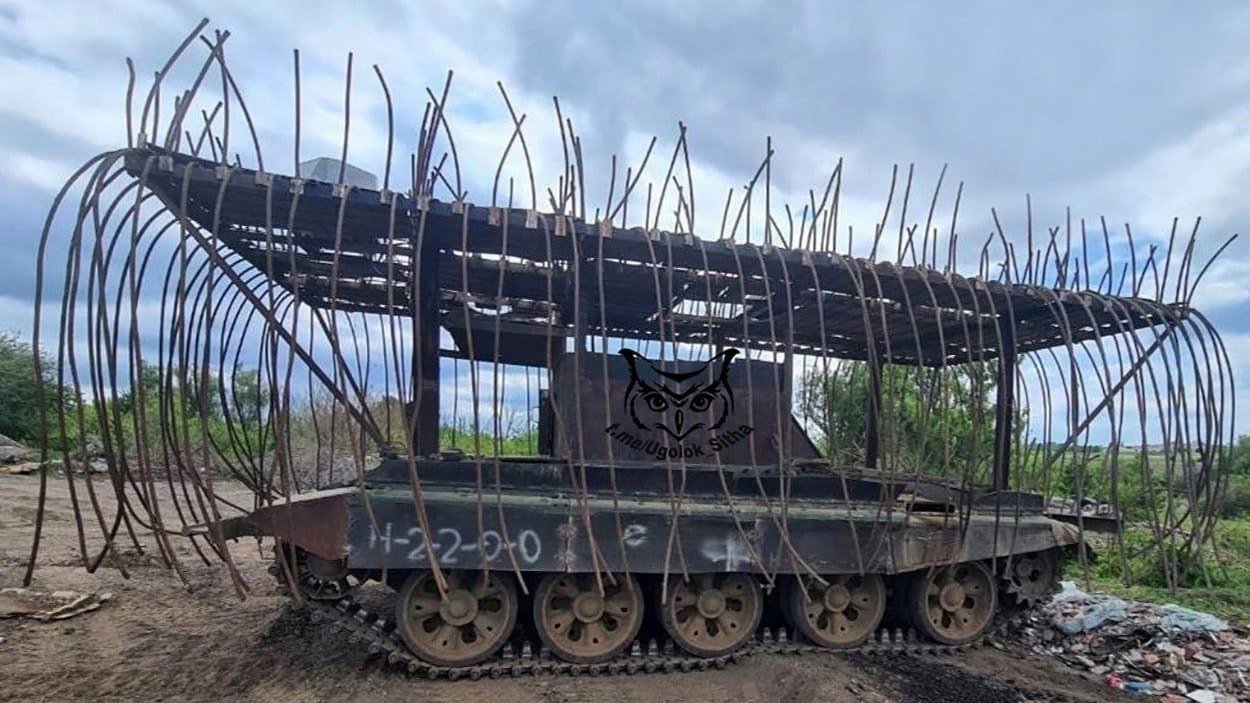First there was the porcupine infantry fighting vehicle. Then the porcupine tank. After that—the porcupine engineering vehicle. Now the Russians are adding metal anti-drone quills to “bukhanka” vans.
The first video of an ex-civilian bukhanka—a 4.4-m, six-passenger van—with add-on spikes made of steel rebar circulated online on Sunday. In just the past month or so, Russian troops in Ukraine have become increasingly convinced the metal quills can prevent strikes by Ukraine’s tiny first-person-view drones, which are everywhere all the time along the 1,100-km front line of Russia’s 40-month wider war on Ukraine.
They’re not necessarily wrong. The spikes look ridiculous, of course. But then, so did the very first anti-drone screens—so-called “cope cages”—the Russians added to their armored vehicles in the early months of the wider war in 2022. Cope cages are now factory-standard on both sides of the wider war—and many armies around the world are adopting them, too.
Also silly-looking: the layers of metal sheeting the Russians added to the many vehicles once Ukrainian drone operators learned how to steer their drones underneath the cope cages. These “turtle tanks” work well enough. They’re heavy and ungainly, but they can survive multiple drone strikes.
It’s unrealistic for the Russians to convert all of their vehicles in Ukraine into turtles, but it’s feasible they could add rebar quills to many vehicles that don’t warrant—or can’t support—a full metal shell. Don’t be shocked if the porcupine bukhanka that appeared earlier this month produces a lot of clones.
The first Russian porcupine vehicle, a BMP with hundreds of quills, didn’t last long. Apparently immobilized by a mine around the town of Troitske in Donetsk Oblast in mid-May, the BMP was later blown up by Ukraine’s famed Birds of Magyar drone group, which flew an explosive FPV directly through an open hatch on the idling BMP.
The porcupine vehicle’s fate may not have been the fault of its add-on anti-drone protection. An unmoving vehicle is an easy target for any FPV pilot. On the move, a vehicle with quills may be able to deflect many FPVs before they can strike the vehicle’s hull.
At least, that’s the Russians’ assumption. They’ve subsequently added rebar quills to tanks, BREM engineering vehicles and—most recently—that bukhanka.
Porcupines are spreading
Operating near or along the front line, BMPs, tanks and BREMs are exposed to a lot of FPVs. Many Russian bukhankas don’t operate near or along the front line. Instead, they haul troops and supplies to and from the front.
But even that can be dangerous. Ukrainian workshops are churning out literally hundreds of thousands of $500 FPVs every month. And Ukraine’s Unmanned Systems Forces, now under the command of Robert Brovdi, the former head of Birds of Magyar, is exploiting gaps in Russia’s radio-jamming to build a veritable wall of drones extending into Russian-occupied Ukraine a distance of 15 km from the line of contact.
As Ukrainian FPVs—not just wireless models, but also jam-proof fiber-optic models—range deeper and deeper into the Russian rear, more Russian supply vehicles are coming under drone attack. In that context, it makes sense to turn bukhankas into porcupines.
Of course, some unfortunate Russian regiments ride their bukhankas into battle owing to a growing shortage of BMPs, tanks and other purpose-made armored vehicles. Assault bukhankas need quills even more urgently.
It may only be a matter of time before Ukrainian brigades produce their own porcupine vehicles. The Russians are often first to deploy some desperate new defense against drones—a logical state of affairs, given Ukraine’s slight but enduring quantitative and qualitative drone advantage. But Russian forces deploy hundreds of thousands of FPVs every month, too—and also target the Ukrainians’ supply lines.
The Ukrainians must protect their own cars, trucks and vans from tiny drones. If the metal quills work—and there’s growing evidence they do—Ukrainians troops won’t hesitate to install them. Even if they look stupid.





